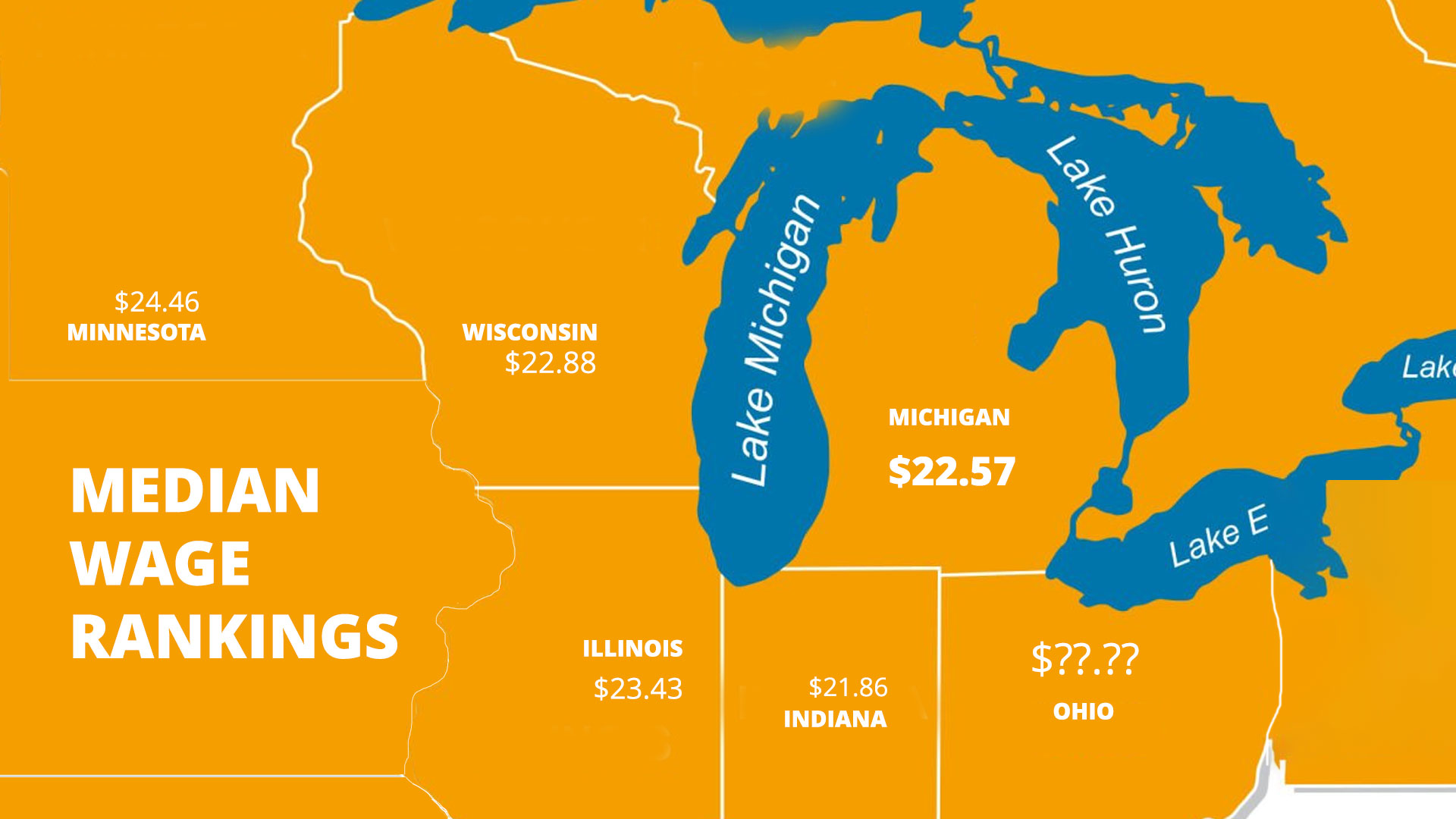When it comes to wages, Michigan isn’t just keeping up with the Joneses — it’s overtaking them. While the national median wage in 2023 stood at $23.11 per hour, Michigan’s median wage clocked in right at the middle around $22.57 per hour. Ohio? Lagging slightly behind at $22.45. Go Blue!
Michigan’s Wage Performance
Michigan’s median wage of $22.57 per hour places it 26th in the U.S., nestled comfortably between Utah and Ohio. This might sound middling, but when you consider the spread of wages across the states, it’s a respectable position. Massachusetts leads the pack with a median wage of $29.18, while Mississippi trails with $18.03 (State of Michigan | Michigan.gov) (Wikipedia). Our wage distribution is stable and fairer than most — our income disparity ratio is 3.58, lower than the national average of 4.18.

State-by-State Wage Rankings
Here’s a snapshot of how other states stack up:
1. Massachusetts: $29.18
2. Washington: $28.67
3. New York: $28.25
4. Alaska: $27.67
5. Connecticut: $27.60
6. California: $26.83
7. New Jersey: $26.04
8. Maryland: $25.98
9. Hawaii: $25.68
10.Virginia: $25.47
23. Pennsylvania $22.81
24. Wyoming $22.72
25. Utah $22.60
26. Michigan $22.57
27. Ohio $22.45
At the other end:
48. Arkansas: $18.78
50. West Virginia: $18.43
51. Mississippi: $18.03
Why This Matters
A lower disparity ratio means Michigan’s workforce enjoys a more balanced pay scale compared to states like Texas and California, where the wage gaps are glaring. In Michigan, the top earners make about 258% more than the lowest earners, a testament to our equitable wage policies.
Beyond the Numbers
The data isn’t just numbers; it’s a reflection of Michigan’s dedication to fair wages and reducing income inequality. In sectors like healthcare support and building maintenance, the wage disparity is minimal, showcasing Michigan’s commitment to supporting its workforce across the board.
The Road Ahead
While Michigan continues to outperform states like Ohio, there’s always room for improvement. Keeping our wages competitive and our workforce happy should remain a top priority. After all, a fair wage isn’t just about the money — it’s about ensuring every Michigander can thrive.
For more detailed stats and insights, check out the full report.



